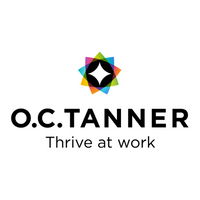Time we stopped measuring employee engagement – and look for great work instead
The term ‘employee engagement’ is often used to measure the psychological state of a workforce. If an employee is engaged, it follows that they’re more likely to contribute to a company’s success.
However, have we fallen into measuring employee engagement when, in fact, we should be measuring something else entirely? After all, if there’s no common definition of what engagement really is, how can we possibly measure it effectively? It’s time to shift focus and find a better way.
Measuring intangibles
The 2009 MacLeod Review found more than 50 definitions of employee engagement, and even engagement experts have contrasting views of what it is. Gallup defines engagement as “the involvement and enthusiasm of employees in their work and workplace”, while Willis Towers Watson describes it as “employees’ attachment to the company and willingness to give discretionary effort”.
Almost everyone agrees that engagement is a measure of intangibles like motivation, commitment, and energy. And it doesn’t measure the outcomes of these feelings in terms of actual work.
So, if engagement doesn’t have a common definition and is measuring intangible elements covering how a person feels and their psychological state, how can it be improved? With difficulty. In fact, over the past 18 years, engagement (as tracked by Gallup) increased from just 26% to 34%. Surely, organisations should have more to show for all the time and resources spent on increasing this metric?
Every employee is different
A common misconception with employee engagement is that there’s a correlation between high engagement levels and greater productivity. This assumes that employees’ personalities are the same, and that if they feel ‘engaged’ with the company then they will work harder. This isn’t the case.
Employees are different, as are their personalities and O.C. Tanner’s 2022 Global Culture Report found that employees generally fall into five different personality types – Socialiser, Tasker, Builder, Coaster and Achiever. An employee’s personality type predicts their likelihood of doing great work.
In fact, Socialisers and Builders, who have positive self-esteem, have the highest likelihood of doing great work, while Coasters, who are known to be more pessimistic and prone to stress, have the least. Achievers who are often high energy but can become distracted, are likely to be viewed as engaged but won’t necessarily deliver great work.
Knowing this is an important step towards re-evaluating the ‘employee engagement’ metric. If ‘engaged’ employees aren’t necessarily being productive, then surely the whole approach to measuring and driving engagement needs a re-think?
The alternative: ‘Great work’
Organisations should be more focused on nurturing and achieving great work, rather than looking to increase engagement. After all, great work directly leads to better business results.
OC Tanner’s research has identified key behaviours that indicate great work by an employee. These include: the employee asking the right questions with a view to how improvements can be made; observing what happens and examines new possibilities; interacts with people outside their immediate circle to help generate ideas; plans and fine-tunes any changes they make; and is highly focused on positive outcomes.
These behaviours and practices behind great work are far easier to define, measure, and train than employee engagement. They’re also more reliable and predictive of business success than engagement.
And so knowing the recipe for great work (and how different employee personas might carry-out their work and exhibit great work behaviours), provides a solid foundation for effectively improving employee and organisational performance.
Tailored strategies, not one-size-fits-all
While general improvements can always be made that will improve overall employee performance, such as strengthening culture, providing modern leadership and integrating recognition into the everyday employee experience, it’s important to remember that employees don’t come in a ‘one size fits all’ package. As such, HR and business leaders shouldn’t continue to plough resources into a blanket approach to driving employee engagement.
Measuring and nurturing great work should become the focus, with an understanding that strategies must be tailored to suit employees’ different personality types. Using this metric rather than worker sentiment, will ultimately deliver far greater individual, team, and organisational results.
Supplied by REBA Associate Member, O. C. Tanner
The worldwide leader in employee recognition solutions that help people thrive at work.








